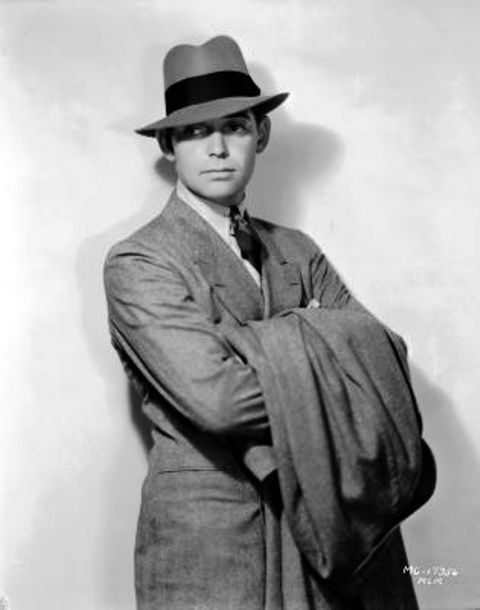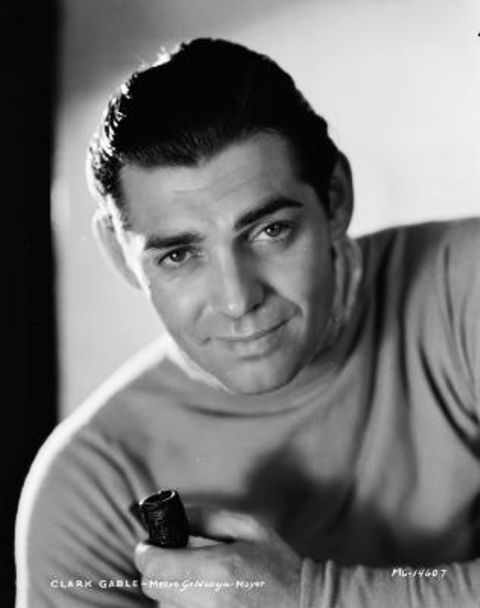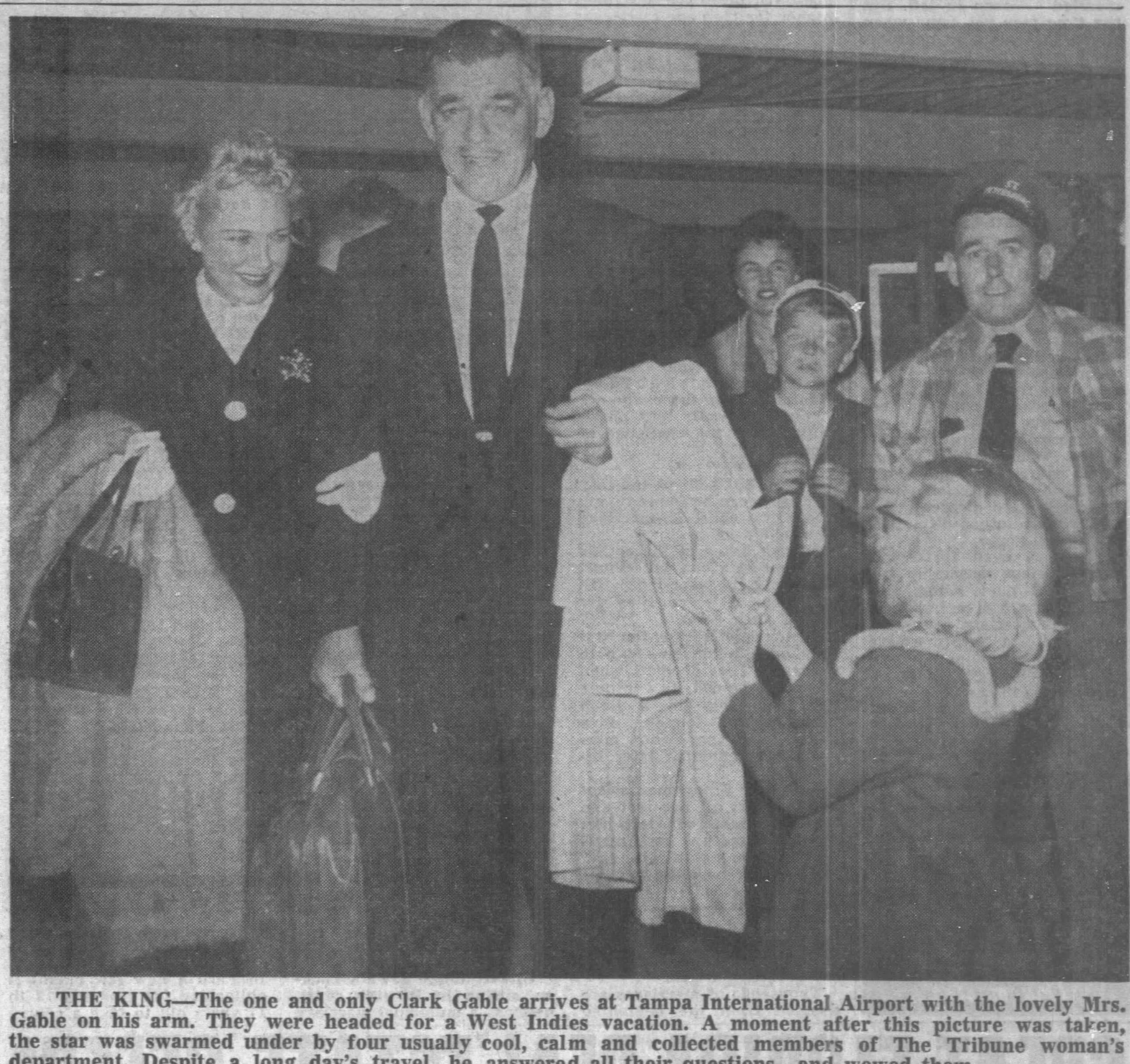{New Article} 1934: Clark Gable Cuts the Apron Strings
As you can see if you peruse the Article Archive here on this site, I have a lot of Clark Gable articles. And I still have a massive stack of articles to type that seems to grow over time rather than deplete. Fan magazines, especially ones from the early 1930’s, can’t be taken to seriously. Studio publicity departments dropped lines to the magazines, feeding them what they wanted printed. And the magazines knew darn well what was fair to print and what was not. Clark and Ria on the outs in 1932 because he has been holed up in Joan Crawford’s dressing room? Nah…let’s put a nice little gossip item about how Ria is in New York on holiday and how much Clark misses her. Loretta Young holed up in a secret location in 1935 to give birth to Clark Gable’s probable love child? Nah…let’s do a whole article on her “mysterious illness that threatens her life!” And so on. On the contrary, this article, I must say, surprised me because it is actually rather insightful as to Clark’s career at the time.
The Clark Gable who played second fiddle to so many glittering female stars is no more. And, we might add, he was practically buried in “Dancing Lady.”
Clark Gable, the actor—a new thrill for the ladies and a pleasant surprise for the men—comes to life.
And all Hollywood is mighty well pleased.
Hollywood didn’t hold it against Clark Gable that he was popular with the fair sex. It even forgot that he did a minimum amount of acting per picture, while he was playing foil to Garbo and Shearer and Crawford and Harlow. In fact, it actually forgave him for demonstrating how the rough and tough, hard –to-get hero finally succumbs to the relentless heroine in boudoir, grass hut, or what else.
Everyone on the lot from director to grip’s helper, would tell you, on the slightest provocation, that it wasn’t Clark’s fault. The girls fought to have him play opposite them, and the executives regularly sacrificed him to make a maiden’s heyday.
Besides, Clark was there to reflect the glory of the girls, and to thrill feminine enthusiasts in Dubuque and New York City. His job was to inspire tired shop girls with aching feet and console weary spinsters—and he did it uncomplainingly. Quite willingly, in fact.
Now Clark is a little sorry he was so uncomplaining—but, after all, you can take his word for it that his was a soft berth. “Like going to fame in a wheel chair,” to use his own expression.
“It’s all crazy,” he had said, “but it sure is a lazy man’s job. Little work, plenty of money, and lots of time to enjoy yourself. Just luck for me, that’s all—just a big apple of luck dropped in my lap.”
And, after the bitter struggle Clark had known, it was an apple of luck in his lap.
Clark harbored no illusions of grandeur. He knew he was just a pawn, put there to reflect the glory of the women stars, and to bring a few “ahs” and “ohs” from the more susceptible femmes in the audiences.
It’s rather refreshing to hear someone in 1934 declare that Clark was wasted in Dancing Lady–completely and utterly true, but I don’t see it admitted at the time. And this is all true, at the beginning of his career, he was a hot lover and was therefore paired with every big female star in MGM’s roster to boost them up, with no real concern for Clark’s own career. He wasn’t really ambitious enough to care, just glad to be successful at all.
For Capra is largely responsible for the new Gable—the Gable that will have as many men, as he has women, followers.
It all happened this way:
Columbia decided they would like to make a picture with Robert Montgomery, and had a story written for him—a story made to order for his particular type of humor.
Then it came about that Columbia had its choice of using Montgomery or Gable.
“Well,” they debated, “Gable has done nothing of late to rave about—but there’s no denying he has a way of drawing the women into the theaters. Maybe it would be a good idea to do a picture with him. Only if we do, we’ll have to write something with a good part for a heavy lover in it—because he could never handle the humor in the picture we’ve just had written for Bob Montgomery.”
Frank Capra had never heard Clark’s plaintive little “Gee, I wish they’d let me do a comedy,” but, as he told me, he had often been struck by the strong human character of Gable.
“You could see it sticking out all over him,” Capra said, “and I’d been playing with the notion that I’d like to give him a chance to be his real self, and to forget the heavy parts that has been wished on him. So I said: “Don’t change a line of that story and Gable will surprise you.”
That is the inside story of how Gable was cast to the lead with Claudette Colbert in “It Happened One Night.” How fully he justified Capra’s confidence in him, all of you who have seen the picture know.
His performance in that is rated as “top.” His handling of the comedy hitch-hiking scene is classed as a “natural.”
While I agree that It Happened One Night truly did change Clark’s screen persona and turned him into the wise crackin’, dame chasin’, eyebrow raisin’ rogue we all adore, the facts here are askew. The part wasn’t written for Bob Montgomery. They offered it to him and they turned it down. Frank Capra was excited that Clark Gable was offered to him for the role, but the part wasn’t tailored to him. Nobody else wanted it and Louis B. Mayer was punishing Clark for running around with Crawford and missing so many weeks on Dancing Lady. Clark was actually quite rude to Capra to begin with and so Capra wasn’t too enthused to work with him at first. (You can read more about that in my review of It Happened One Night.) Eventually it was a pleasant set and Clark took to the role easily.
You can read the article in its entirety in The Article Archive.



